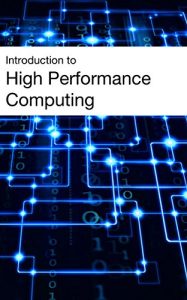Why Worry About Performance?
“Over the last decade, the definition of what is called high performance computing has changed dramatically. In 1988, an article appeared in the Wall Street Journal titled “Attack of the Killer Micros” that described how computing systems made up of many small inexpensive processors would soon make large supercomputers obsolete. At that time, a “personal computer” costing $3000 could perform 0.25 million floating-point operations per second, a “workstation” costing $20,000 could perform 3 million floating-point operations, and a supercomputer costing $3 million could perform 100 million floating-point operations per second. Therefore, why couldn’t we simply connect 400 personal computers together to achieve the same performance of a supercomputer for $1.2 million?
This vision has come true in some ways, but not in the way the original proponents of the “killer micro” theory envisioned. Instead, the micro-processor performance has relentlessly gained on the supercomputer performance. This has occurred for two reasons. First, there was much more technology “headroom” for improving performance in the personal computer area, whereas the supercomputers of the late 1980s were pushing the performance envelope. Also, once the supercomputer companies broke through some technical barrier, the micr“processor companies could quickly adopt the successful elements of the supercomputer designs a few short years later. The second and perhaps more important factor was the emergence of a thriving personal and business computer market with ever-increasing performance demands. Computer usage such as 3D graphics, graphical user interfaces, multimedia, and games were the driving factors in this market. With such a large market, available research dollars poured into developing inexpensive high performance processors for the home market. The result of this trend toward faster smaller computers is directly evident as former supercomputer manufacturers are being purchased by workstation companies (Silicon Graphics purchased Cray, and Hewlett-Packard purchased Convex in 1996).
As a result nearly every person with computer access has some “high performance” processing. As the peak speeds of these new personal computers increase, these computers encounter all the performance challenges typically found on supercomputers.
While not all users of personal workstations need to know the intimate details of high performance computing, those who program these systems for maximum performance will benefit from an understanding of the strengths and weaknesses of these newest high performance systems.
“Over the last decade, the definition of what is called high performance computing has changed dramatically. In 1988, an article appeared in the Wall Street Journal titled “Attack of the Killer Micros” that described how computing systems made up of many small inexpensive processors would soon make large supercomputers obsolete. At that time, a “personal computer” costing $3000 could perform 0.25 million floating-point operations per second, a “workstation” costing $20,000 could perform 3 million floating-point operations, and a supercomputer costing $3 million could perform 100 million floating-point operations per second. Therefore, why couldn’t we simply connect 400 personal computers together to achieve the same performance of a supercomputer for $1.2 million?
This vision has come true in some ways, but not in the way the original proponents of the “killer micro” theory envisioned. Instead, the micro-processor performance has relentlessly gained on the supercomputer performance. This has occurred for two reasons. First, there was much more technology “headroom” for improving performance in the personal computer area, whereas the supercomputers of the late 1980s were pushing the performance envelope. Also, once the supercomputer companies broke through some technical barrier, the micr“processor companies could quickly adopt the successful elements of the supercomputer designs a few short years later. The second and perhaps more important factor was the emergence of a thriving personal and business computer market with ever-increasing performance demands. Computer usage such as 3D graphics, graphical user interfaces, multimedia, and games were the driving factors in this market. With such a large market, available research dollars poured into developing inexpensive high performance processors for the home market. The result of this trend toward faster smaller computers is directly evident as former supercomputer manufacturers are being purchased by workstation companies (Silicon Graphics purchased Cray, and Hewlett-Packard purchased Convex in 1996).
As a result nearly every person with computer access has some “high performance” processing. As the peak speeds of these new personal computers increase, these computers encounter all the performance challenges typically found on supercomputers.
While not all users of personal workstations need to know the intimate details of high performance computing, those who program these systems for maximum performance will benefit from an understanding of the strengths and weaknesses of these newest high performance systems.






